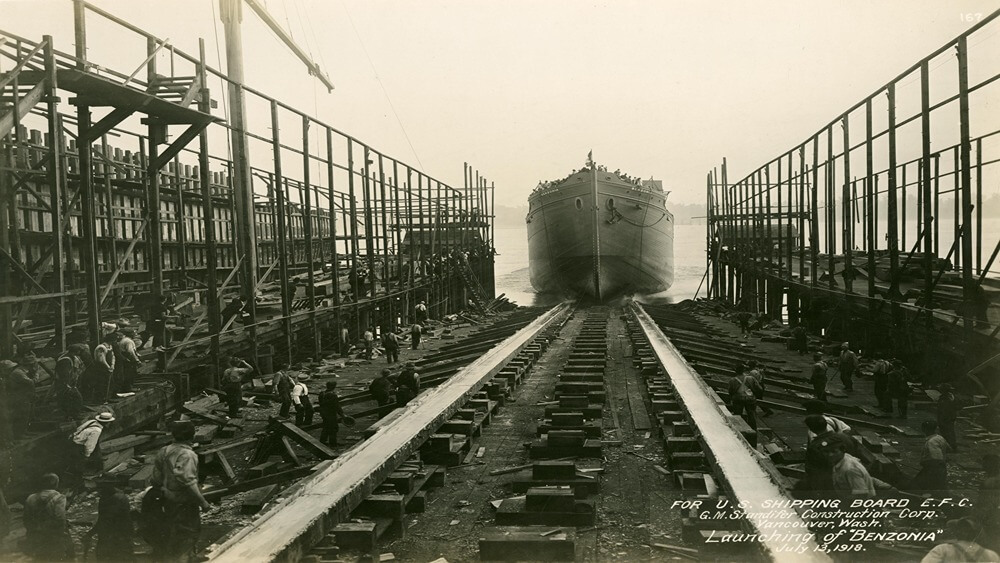Benzonia

Ship Stats

State ID: 18CH515
Vessel Type: Merchant vessel (steamship)
Location: 38°28'13.94"N, 77°16'11.06"W (38.47054, -77.26974) (Duke University, 2016)
Length: 281 feet 10 inches
Breadth: 45 feet 2 inches
Deadweight Tonnage: 3,500
Builder: G.M. Standifer Construction Corporation, Vancouver, Washington
Owner: Titled to the State of Maryland under the Abandoned Shipwreck Act
Flora & Fauna: Significant flora growth along with an active osprey nest in the port stern area (facing out toward the river)
Significance: United States Shipping Board vessel built for World War I effort
Wreck Site
The vessel sits in an east by west orientation with its bow facing the Maryland shoreline. Surveys recorded the presence of a sharp stern, ferrous fastenings and cross strapping, and extant stempost and sternpost. Concrete and three visible bulkhead foundations are in the forepeak. During Hurricane Isabel in 2003 a number of vessels shifted position, including Benzonia. Benzonia was essentially lifted from its resting place and laid back down again, atop another steamship hull, 18CH531 (Caribou), with the stern rising high out of the water. Benzonia caught fire twice between 2012 - 2022. The first time was in 2013, and the fire was extinguished by a Prince William Fire Department (Virginia) vessel. In 2016, another fire took hold, and it smoldered for more than a week, suffering substantial damage and destroying much of the prominent stern.

Historical Background
Benzonia was built by the G.M. Standifer Construction Corporation of Vancouver, Washington. The G.M. Standifer Construction Corporation had three shipyards, two of which were located in Vancouver, Washington, along the Columbia River. One of the shipyards built steel-hulled ships, while the other focused on building wooden-hulled vessels. Benzonia was built at the wooden shipbuilding shipyard, styled as a Ferris-type cargo steamship for the United States Shipping Board as part of the large war effort of World War I. Named after a town in Michigan, Benzonia launched on July 13, 1918, to great fanfare. Sold to Western Marine Salvage in 1922, Benzonia ended up in Mallows Bay, Maryland in 1929.






